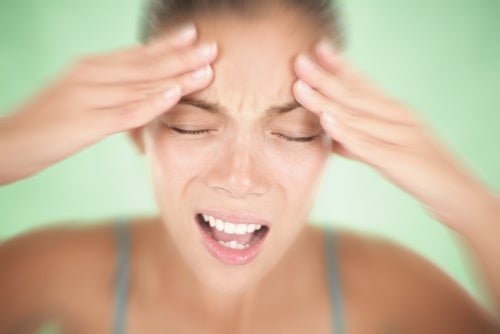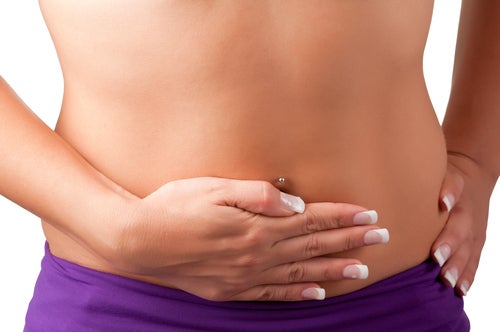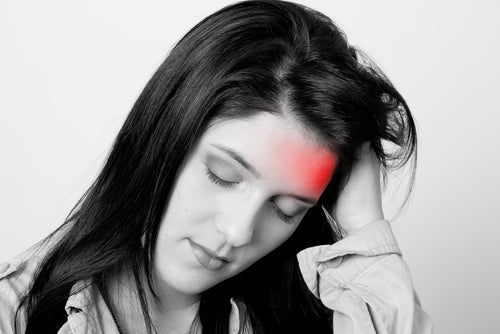
Before the ladies said: I have a terrible headache! and spent late them lying with the covered eyes and cool compresses in the temples; While the husbands thought it only drama. Today we know that these headaches so intense actually exist and are capable of incapacitating the person suffering them. The name of this condition is migraine.
But do we know how to distinguish the ordinary headache migraine? Is there any way to predict its start? Continue reading this article and you will know How to detect the symptoms of migraine.
Let's talk about migraine
Migraine is a neurological disease that appears most frequently in women between 15 and 45 years old. It is characterized by cause of acute pain episodes interspersed with long periods of symptom free. The most usual is that they occur 1 to 4 episodes per month lasting from 4 to 72 hours, depending for a treatment or not.Increasingly people who go to the doctor to find relief from this condition, so it is important to be aware of the factors that may trigger an attack. Numerous studies are aimed to unravel the neurological processes that cause this condition but still only managed various theories. You are Yes identified certain factors that influence their emergence: there is a genetic component that makes us susceptible of suffering from migraine although scientists assert that lifestyle and environmental conditions play a key role as facilitators of his appearance.
Migraine triggers
Power
Periods of prolonged fasting or the ingestion of foods such as sausages, chocolate, vintage or melted cheese, banana, soy sauce, coffee, alcoholic beverages and products with additives and flavorings, can cause a crisis of migraine in susceptible people.Hours of sleep

Mismatches in sleep schedules frequently cause the emergence of crises, this occurs mostly on weekends, which is when we try to rest more in the morning and go for a walk into the wee hours of the night. To combat this evil, it is recommended to follow a regular and uniform pattern in the hours of rest.
Psychological factors
Stress, anxiety, worries, or the emotional impacts are related to the development of migraine attacks. The pain may appear before or after the time of maximum tension. Tranquillity is the best way to prevent migraine headaches.Menstrual cycle

The days prior to menstruation tend to be the most common for the emergence of migraines. 50% of women affected by this condition referred to a relationship between the presence of crisis and time of the female hormonal cycle. It is believed that this is due to the decline in levels of circulating estrogen related to this process.
Atmospheric changes
Sudden changes in atmospheric pressure and the intense wind also act as triggers of migraine, but sometimes pain can be mistaken for the caused by tension-type headache.Now well how can differentiate from the rest of the headaches migraine , then keep reading so you know
How to detect the symptoms of migraine
Migraine causes a very intense, throbbing pain (either as a continuous hammering) that can affect the right or left halves of the face or, rarely, both sides and you can even extend to the neck. Before the onset of an attack, they usually appear premonitory symptoms or prodromes as mood swings (euphoria, irritability), continuous yawning, inattentiveness, fatigue, slow brain activity, pallor, pains in the neck and the muscles of the head, runny nose or stuffy nose and compulsive desire of eating sweet foods.I then show you what are the symptoms for them you can recognize and deal with them quickly. These symptoms worsen with physical activity, usually patients tend to retire to a dark room and stay inactive.
Migraine Symptoms

Sensitive
- Sensitivity to light or photophobia
- Photophobia or sensitivity to sounds, mostly noises
- Sensitive to some smells
Gastrointestinal
- Nausea
- Vomiting
- Gastrointestinal discomfort
Neurological
AuraThis symptom usually appears in many patients a few hours or minutes before the attack, in the form of a transient crisis with a variable duration between 4 and 60 minutes. He is believed that it appears due to the small contractions suffering blood vessels before dilatation caused by migraine.
The decrease of blood flow causes the characteristic signs of the aura set:
- Visual symptoms: Points, bright flashes, rays, split or tile, or decreased visual field images
- Alterations of sensitivity: Itching, tingling, or tingling in the lips, tongue, face, arms or hand.
- Motor deficiencies: involuntary movements of any part of the body, tremors, vertigo or loss of mobility of the half of the body. Disorders of language or difficulty may appear to speak.
Other
- Pallor
- Changes in the temperature of the head
- Anxiety, fatigue, palpitations
- Depression
- Insomnia
Treatments for migraine
There are various treatments to alleviate this condition, although the first step you should take is to avoid exposure to triggers that you already know, this way you'll be protecting your health. Remember that migraine can have very serious consequences. Take care of you and is your medical condition.Non-pharmacological treatments
Change your lifestyle in a way such that you suffer the least amount of possible attacks: keep a pattern of regular life especially with respect to the hours of sleep and meal schedules. It is suggested that you perform physical exercises that you will strengthen and improve your circulation. Avoid too crowded places, as well as the emotional situations that raise your stress level.Pharmacological treatments
Anti-inflammatory agents, non-steroidal, the triptans and ergotamine are very efficient. Such as naproxen and ibuprofen anti-inflammatory agents are used to stop the migraine. The triptans such as sumatriptan and zolmitriptan eliminate pain in a high percentage of patients, but have varied and dangerous side effects. Ergotamine, for its part, should be used only twice a week because it can cause rebound headaches.Preventive medication
When attacks occur more than twice a week is recommended as preventive medications, always under medical prescription: beta-blockers such as propranolol and atenolol, blockers of calcium as flunarizine channels, tricyclic antidepressants like amitriptyline and anticonvulsants as valproic acid and topiramate.Now you know how to identify migraine and how to treat it.

0 comentarios:
Post a Comment